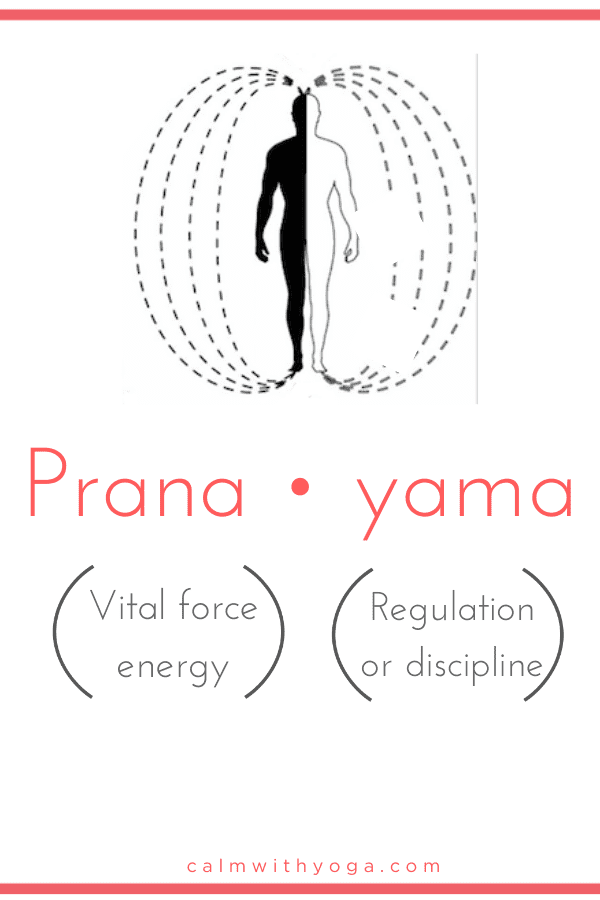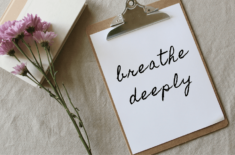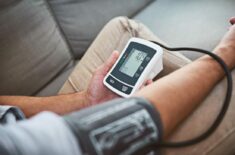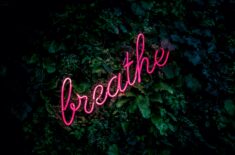I took a deep breath and listened to the old bray of my heart: I am, I am, I am.
– Sylvia Plath, poet & writer
I used to live constantly dreading the moment my next panic attack would strike.
Blood pressure building up and chest pain expanding.
Heart rate thumping a mile a minute.
Hot, sweaty hands.
Can’t hear.
Can’t breathe.
Overwhelming fear and anxiety taking over in a matter of seconds.
I know I’m not alone in this experience.
About 6 million of us in the US will experience at least one panic attack in our lifetime, and women are twice as likely as men. (1)
Even though in the moment it may feel like everything is out of our control, it is possible to rise above a panic disorder.
I know because I’ve done it – I haven’t had a panic attack in years.
The thing that helped me the most?
Breathing exercises, yoga, and making stress management a part of my daily life…
Using your breath to break the pattern
Panic attacks feel like earthquakes merged with volcanoes erupting inside you.

One of the most compromised bodily processes during an attack is your breathing pattern.
Each breath cycle shrinks, you get shortness of breath and shallow breathing which can lead to hyperventilation if you’re not careful.
A few years ago I was desperate to regain control of my life, my body, and my mind, so I set out to find whatever could help me achieve this naturally.
I came across the powerful practice of Raja Yoga, the yoga of the mind and emotions.
The whole objective of Raja Yoga is to learn how to conquer the mind and emotions so that we become less reactive/ impulsive and more poised and more of who we truly are.
#RajaYoga taught me that I am not my anxiety;that I am bigger than my fear. Share on XEven in the midst of a breakdown where I’m crippled by it.
One of the main limbs of this kind of yoga is yogic breathwork or pranayama because it is believed that we can control the mind if we first learn to control our inhales and exhalations.
The practice also offered me a powerful tool to use whenever I felt an attack creeping on.
The ancient art of pranayama, or yogic breathing.

Yoga teachings state that if the mind is moving, so are the heart and respiration.
When we are angry, our breath quickens; when we sleep, our breath slows down.
By consciously slowing down the breath and making it rhythmic so that consciousness is not disturbed by it, we can achieve a corresponding tranquility.
-Dr. Hiroshi Motoyama, “Science and the Evolution of Consciousness”
There are several science-backed, simple breathing exercises that I used to manage the attacks and reduce my anxiety.
All of them have one element in common – deep breathing.
Deep breathing isn’t the same thing as ‘big breathing’ which involves taking in bigger-than-necessary breaths.
When you breathe deeply you engage the lower belly which is why it’s also called belly breathing and abdominal breathing.
By breathing with your lower belly you activate the diaphragm – the dome-shaped muscle that sits right below your ribs and lungs.
Diaphragmatic breathing helps to quiet down your stress response and serves as a natural relaxation technique for the body to release muscle tension and stress.
2 Proven Yogic deep breathing exercises to use before, during, & after attacks:
#1: Sama Vritti (aka equal breathing )
#2: Nadi Shodhana (aka alternate-nostril breathing)
By adopting a consistent and regular practice using either of these techniques you become a clearer channel through which you can rise above mental and emotional turmoil.
In Sanskrit ‘nadi’ means ‘channel’ and ‘shodhana’ means ‘purification.’
This is the same technique that Hillary Clinton turned to after the loss of the elections. (2)
Numerous studies indicate notable mental, emotional, and physical health benefits associated with a consistent Nadi Shodhana practice.
It’s been shown to re-balance our nervous system by activating the relaxation and regeneration response while deactivating the stress/panic response. (3)
The technique also appears to balance the activity of the right and left brain hemispheres, helping us overcome knee-jerk reactions while making it possible to cultivate skills like mindful awareness and genuine presence in the midst of panic and fear. (4)
In fact, when we’re in the throes of a panic attack it’s like our rational thinking mind gets hijacked and turned off.
We aren’t able to function or focus or concentrate let alone perform at our best.
Nadi shodhana appears to improve performance, especially during tasks that require concentration. (5)
One study involving a group of 5 different pranayama techniques including Nadi Shodhana, showed a 73% positive response rate and a 41% remission rate among GAD (generalized anxiety disorder) patients after just 4 weeks of pranayama practice. (6)
So how do we practice this powerful technique?
Here are 8 steps to follow the moment we feel that panic start to creep in:
- Sit upright and comfortably, with the neck, shoulders, face, and jaw relaxed.
- Place the left hand on the left knee
- Take a full breath in with the lower belly expanding outwardly (5 counts)
- Block the right nostril with the right thumb and breathe out, contracting the lower belly inward. (8 counts)
- Inhale while keeping the right thumb where it is. (5 counts)
- Switch to block the left nostril with the right middle and ring fingers and breathe out fully (8 counts)
- Inhale while keeping the fingers where they are. (5 counts)
- Keep repeating the same pattern in steps 4-7 for at least 5 minutes to fully switch the body out of panic mode and into calm mode. (The longer the better.)
Practice along with me and let’s do this together:
Commit to a daily practice to create REAL change
I know how frustrating and scary it can be to live at the mercy of a panic attack that can strike at any moment.
I’ve had my fair share of public meltdowns.
But you can get through this.
You can overcome this by simply starting to use your breath.
Remember:
Your breath can be a great ally or a foe depending on who's in control - you or it. Share on XDuring a panic attack, we get hijacked by our breath as the body and mind go into emergency mode.
This makes it very hard to take conscious, slow, deep breaths.
But you can in that moment take control of your physiology by consciously controlling your breath.
This particular pranayama is no magic pill.
For best results start practicing it daily and create a habit out of it.
Become intimately familiar with the motions and sensations of Nadhi Shodhana.
Investing just 5 minutes a day (out of the 1,440 minutes each day) in your peace of mind and triumph over the panic is worth it, isn’t it?
Of course it is.
You got this!
PS: It may feel like you are going through this alone or that no one else is experiencing it like you are – but keep in mind many of us suffer in silence.
If you could use a bit of help setting up your breathwork practice hit me up in the contact section, shoot me an email to [email protected] or reach out on IG (@motherhoodcommunityofficial)
REFERENCES
:
(1) https://adaa.org/about-adaa/press-room/facts-statistics
(2) https://www.washingtonpost.com/news/inspired-life/wp/2017/09/15/hillary-clinton-used-alternate-nostril-breathing-after-her-election-loss-heres-why-you-really-should-too/?noredirect=on&utm_term=.e89d63db7edf
(3) http://www.msjonline.org/index.php/ijrms/article/view/3581
(4) http://www.sciencedirect.com/science/article/pii/0167876084900175
(5) https://www.ncbi.nlm.nih.gov/pmc/articles/PMC3628802/
(6) https://www.ncbi.nlm.nih.gov/pmc/articles/PMC3276935/












